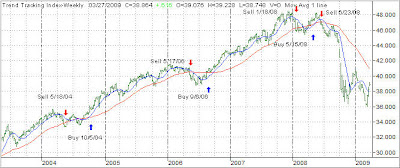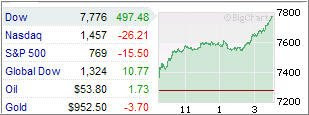 Last Monday, I wrote about a lawsuit that may potentially cut mutual fund expenses for investors. Now Vanguard is in the news signaling that higher fees may be on the horizon. Here are some highlights:
Last Monday, I wrote about a lawsuit that may potentially cut mutual fund expenses for investors. Now Vanguard is in the news signaling that higher fees may be on the horizon. Here are some highlights:
As if the market crash hasn’t been painful enough, more mutual-fund firms are set to raise their fees in response to falling assets, leaving shareholders with even less money in their battered accounts.
The decision by low-cost stalwart Vanguard Group to raise expense ratios for many of its mutual funds is a clear sign to investors of a tough year ahead.
After a brutal 2008, with many stock funds down more than 30%, fund investors face the prospect of paying higher charges this year as fund firms scramble to make up for lower asset levels.
Mutual-fund charges are based on a percentage of assets, but some of their costs — such as customer service centers and mailing out fund literature — are fixed. After the dramatic plunge over the past year, which has seen the industry’s total assets under management fall to $9.5 trillion from $12 trillion, hiking expense ratios is likely to be a viable option for many firms.
“It’s a testament to the market environment that even a fund family [like Vanguard] that’s been taking in new money has seen its assets decline so much that it has to raise its expense ratios,” said Dan Culloton, associate director of fund analysis at Morningstar Inc.
Vanguard said it had $84 billion in net inflows across all its funds in 2008, and $25 billion in net inflows so far this year. But according to Culloton, from the end of 2007 through the end of February, total assets under management fell to just below $1 trillion from $1.3 trillion.
So far, 31 of Vanguard’s roughly 110 funds have said they are increasing their expense ratios. The average increase is 0.05%; last year, Vanguard’s average expense ratio was 0.2% per fund.
Vanguard is “not immune” to the poor market conditions, said John Woerth, a company spokesman. But, he added, on a relative basis Vanguard is “still the low-cost leader by far.”
Sure, Vanguard is still the low cost leader, no question about that. However, cutting costs and reducing staff maybe a better option because many investors may not return, or those who do, may do so only on a temporary basis.
Why?
Vanguard is the staunchest supporter of buy-and-hold and, despite 2 bear markets during this century, they have not adjusted their model to support changing conditions. Despite this recent feel-good rally, we’re still stuck in the midst of the worst economic downturn since the 1930s.
We’ve seen a huge market drop last year devastating most investors’ portfolios. This was followed by a 20% rally from the November lows to the end of 2008. 2009 saw a 25% drop in the S&P; 500 within the first 7 weeks, and now a 23% rebound in only 13 trading days; who knows what’s next.
What this all comes down to is that we are in an investment climate which simply does not justify a mindless buy and hold solution. Many investors (I hope tens of millions) had to learn this sobering fact the hard way and will hopefully from here on forward use a more intelligent approach to managing their investments.
If they do, that will not bode well for the buy-and-hold shops as investors are no longer willing to get stuck with a bullish investment in a bear market and subsequently paying for the privilege of seeing their portfolios getting another severe haircut again.






